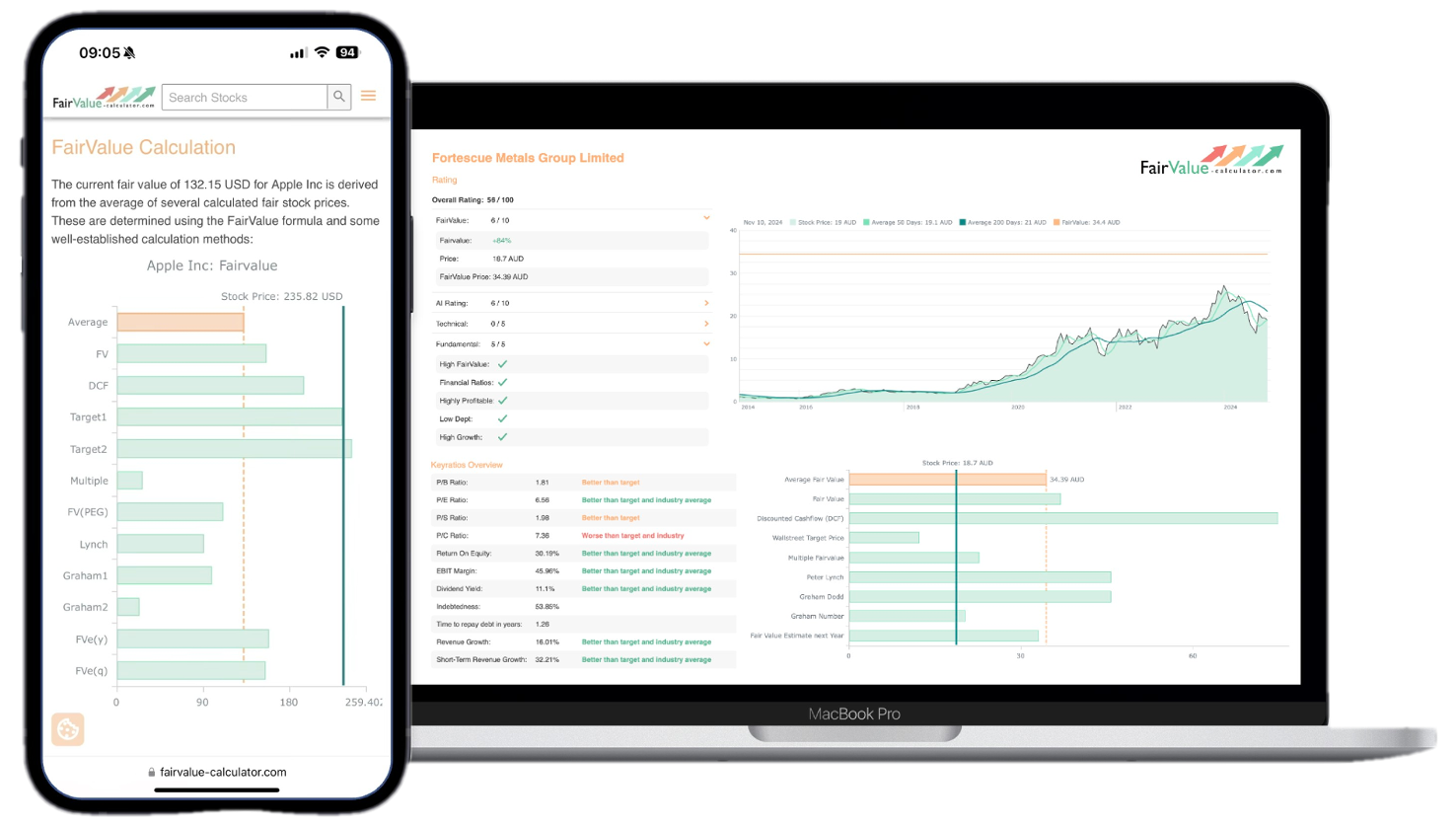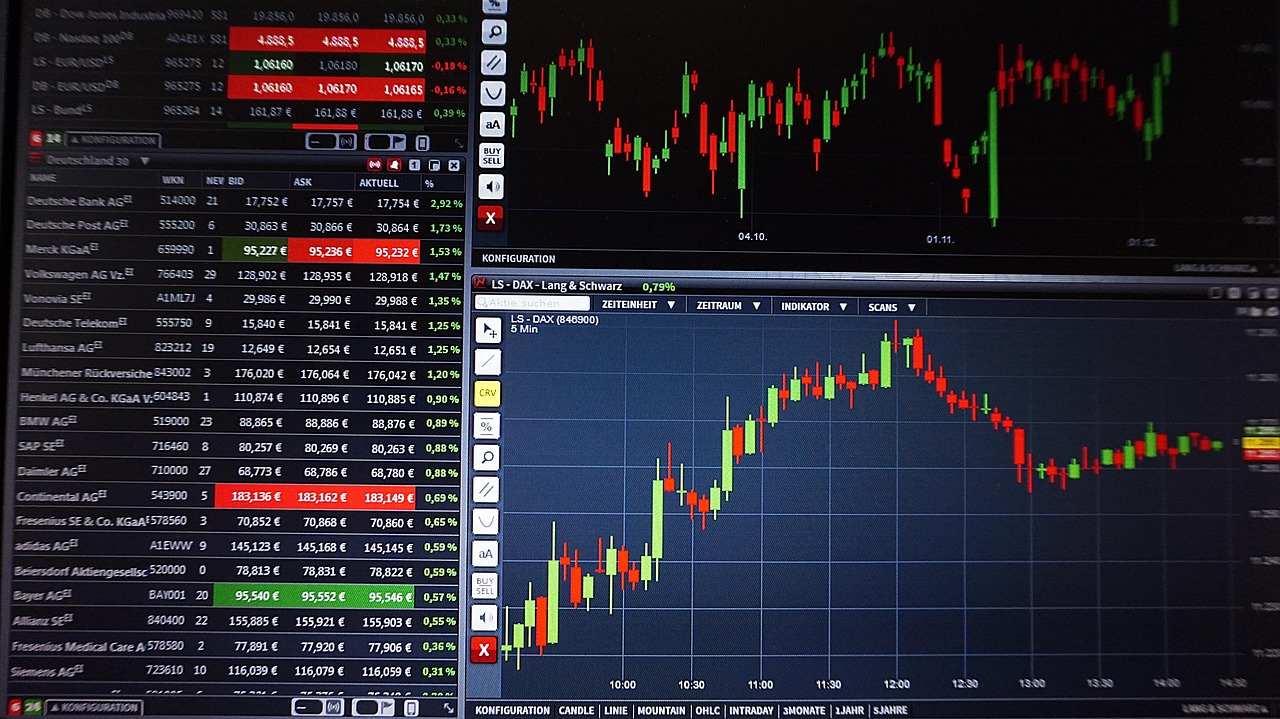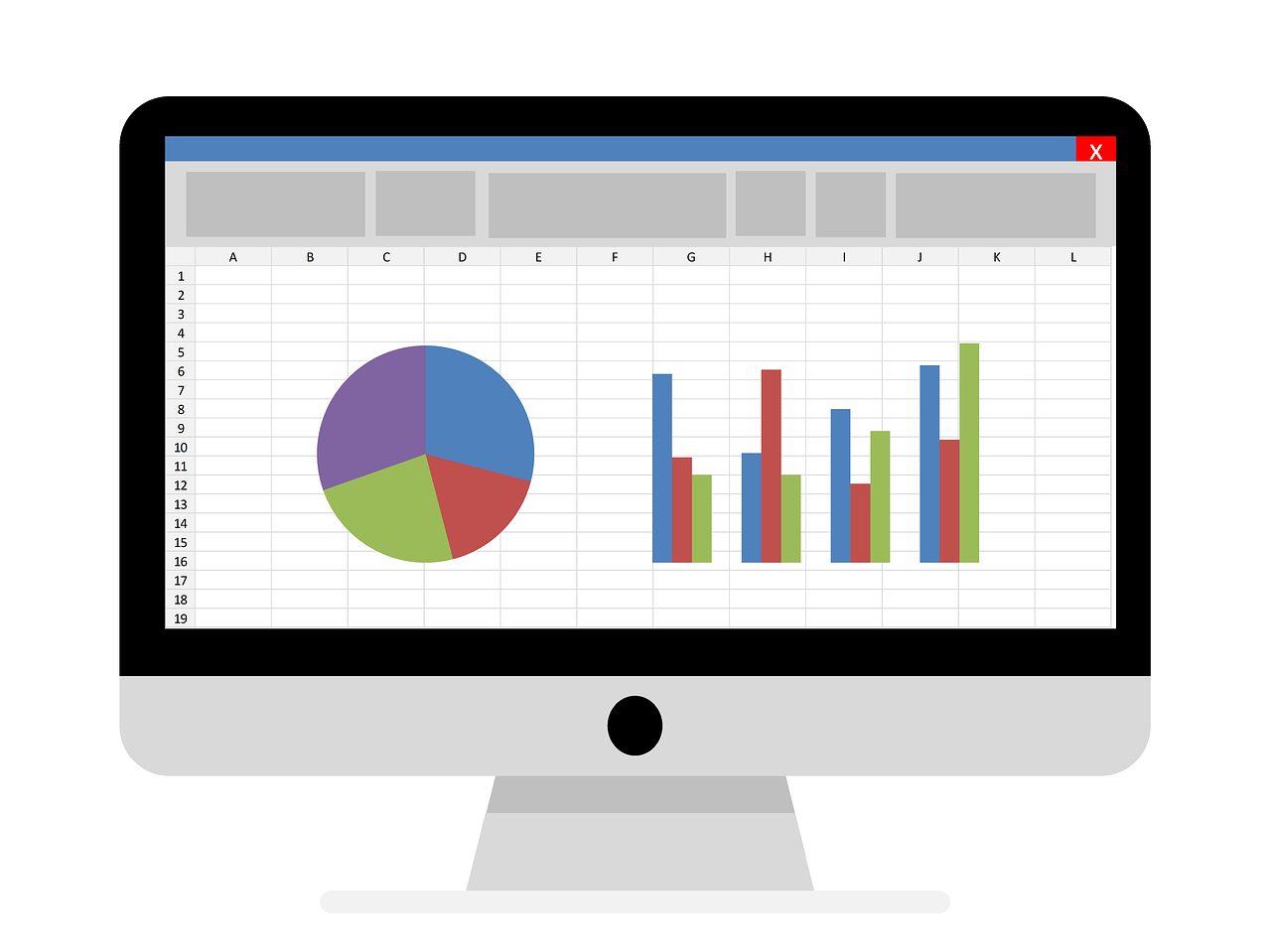The Fama-French three-factor model is an asset pricing model developed by Eugene Fama and Kenneth French in the early 1990s. It builds on the capital asset pricing model (CAPM) by adding two additional risk factors – size and value – to the market risk factor in CAPM. The Fama-French model has become a widely used tool in finance for explaining stock returns and evaluating portfolio performance.
💡 Discover Powerful Investing Tools
Stop guessing – start investing with confidence. Our Fair Value Stock Calculators help you uncover hidden value in stocks using time-tested methods like Discounted Cash Flow (DCF), Benjamin Graham’s valuation principles, Peter Lynch’s PEG ratio, and our own AI-powered Super Fair Value formula. Designed for clarity, speed, and precision, these tools turn complex valuation models into simple, actionable insights – even for beginners.
Learn More About the Tools →Introduction to the Fama-French Three-Factor Model
🚀 Test the Fair Value Calculator Now!
Find out in seconds whether your stock is truly undervalued or overpriced – based on fundamentals and future growth.
Try it for Free →The capital asset pricing model (CAPM) was developed in the 1960s and suggests that the expected return on an asset can be calculated based on its beta, which measures the asset’s sensitivity to movements in the overall market portfolio. However, empirical studies showed that beta alone was not sufficient to explain differences in stock returns. Smaller companies with higher beta were not generating higher returns than would be predicted by the CAPM.
Explore our most popular stock fair value calculators to find opportunities where the market price is lower than the true value.
- Peter Lynch Fair Value – Combines growth with valuation using the PEG ratio. A favorite among growth investors.
- Buffett Intrinsic Value Calculator – Based on Warren Buffett’s long-term DCF approach to determine business value.
- Buffett Fair Value Model – Simplified version of his logic with margin of safety baked in.
- Graham & Dodd Fair Value – Uses conservative earnings-based valuation from classic value investing theory.
- Intrinsic vs. Extrinsic Value – Learn the core difference between what a company’s really worth and what others pay.
- Intrinsic Value Calculator – A general tool to estimate the true value of a stock, based on earnings potential.
- Fama-French Model – For advanced users: Quantifies expected return using size, value and market risk.
- Discount Rate Calculator – Helps estimate the proper rate to use in any DCF-based valuation model.
To address the inadequacies of the CAPM, Fama and French added two additional factors – size and value – to create a three-factor model.
The three factors in the Fama-French model are:
- Market Risk – Beta measurement of sensitivity to broad stock market movements
- Size – Difference between the returns on portfolios of small and big company stocks
- Value – Difference between the returns on portfolios of high and low book-to-market stocks
The size factor captures excess returns related to company size, while the value factor captures excess returns based on book-to-market ratios. Together, these three factors can explain most of the variation in stock returns.
Reasons for Adding Size and Value Factors
Fama and French found empirical evidence that a size premium and value premium exist in stock returns. Smaller companies and those with higher book-to-market ratios (value stocks) tended to generate higher returns than predicted by the CAPM.
The size premium is based on the observation that small-cap stocks earn higher risk-adjusted returns, on average, compared to large-cap stocks. There are several potential explanations for the size premium:
- Smaller companies tend to be riskier, have more volatile earnings, and have higher failure rates. Investors demand a premium for holding higher-risk stocks.
- Small stocks tend to be less liquid than large stocks. Investors require a liquidity premium for holding less liquid assets.
- Small stocks receive less analyst coverage and tend to be underfollowed by institutional investors. More effort is required to uncover data and information on small stocks.
The value premium is based on the empirical observation that value stocks with high book-to-market ratios have provided higher returns compared to growth stocks with low book-to-market ratios.
Reasons cited for the value premium include:
- Value stocks are riskier, as they tend to have higher financial leverage, more business risk, and greater earnings volatility. The higher returns compensate for the extra risk.
- Value stocks are associated with distressed companies. Investors demand a premium for the higher chance of bankruptcy.
- Behavioral biases may cause growth stocks to become overpriced relative to value stocks. As valuation multiples revert to the mean over time, value stocks outperform.
By including additional factors for size and value, the Fama-French model can capture major anomalies in average stock returns better than the single factor CAPM.
Fama-French Three-Factor Model Specification
The Fama-French three-factor model regression equation is:
ri – rf = ??i + ??i (rm – rf) + siSMB + hiHML + ??i
Where:
ri = Expected return on asset i
rf = Risk-free rate
??i = Regression intercept
??i = Asset beta
rm = Return on the market
SMB = Difference between the returns on small and big stock portfolios (size factor)
si = Sensitivity of asset i to size factor
HML = Difference between the returns on high and low book-to-market stocks (value factor)
hi = Sensitivity of asset i to value factor
??i = Residual error term
This model says that the excess expected return on an asset is explained by the three factors – market, size, and value. The coefficient ???? I measure the asset’s systematic risk relative to the broad market portfolio. The si and hi coefficients measure sensitivity to the size and value factors.
Constructing the Fama-French Factors
Fama and French constructed their size and value factors using portfolios sorted on market capitalization and book-to-market ratios:
- Size Factor (SMB): The difference each month between the average returns of three small stock portfolios and three big stock portfolios.
- Value Factor (HML): The difference each month between the average returns of two high book-to-market equity portfolios and two low book-to-market equity portfolios.
The size and value factors are zero-investment portfolios designed to capture the risk premium associated with those characteristics. For example, SMB represents a monthly long-short portfolio that is long small caps and short large caps.
The market factor is constructed based on the excess return of the market portfolio over the risk-free rate. Fama and French used the overall stock market, such as the S&P 500 index, to represent the market portfolio.
The Fama-French factors are published monthly and are now widely used in empirical asset pricing studies and portfolio performance measurement.
Benefits of the Fama-French Three-Factor Model
Some of the key benefits of the Fama-French model compared to the CAPM include:
- Improved explanatory power of stock returns, especially for portfolios sorted on size and book-to-market characteristics. The model explains over 90% of diversified portfolio returns.
- The additional factors address major anomalies and empirical regularities in stock returns better than the single factor CAPM.
- Can be used to evaluate active portfolio management by determining if outperformance is based on exposure to size and value factors versus manager skill.
- Helps explain differences in average returns across stocks based on market cap and valuation ratios.
- Enables investors to refine asset pricing and build diversified portfolios that target size and value premiums.
Overall, the Fama-French three-factor model represents a significant improvement over the CAPM by incorporating additional risk factors that capture important dimensions of stock return variability. The model provides a more complete and nuanced approach to estimating the cost of equity and expected returns.
Criticisms of the Fama-French Three-Factor Model
While widely adopted, there are some criticisms of the Fama-French model:
- The model is based on historical realized returns, which may not represent expected returns going forward. The size and value premiums may be sample-specific.
- It is not clear whether size and value are risk factors in an asset pricing model sense. The higher historical returns could be chance or mispricing rather than risk compensation.
- The model may lead to data mining and factor fishing. Researchers can data mine to find characteristics that worked historically without a risk-based explanation.
- The factors have unstable and time-varying premiums. Their performance tends to come in long cycles, underperforming for years before rebounding.
- It is sensitive to how the factors are defined and constructed, such as the stock cutoffs used for small versus big companies.
- There is debate about what fundamental economic risks and frictions the size and value factors represent. The risk story is less clear than with market beta in the CAPM.
- Some critics argue there are additional factors beyond size and value that affect stock returns, such as momentum and profitability.
While offering significant explanatory power, researchers continue to debate the rationale behind the size and value premiums and whether they will persist going forward. Extensions to the three-factor model have been proposed by adding additional factors.
Extensions and Multifactor Models
The Fama-French three-factor model spurred extensive research into factor models of asset pricing. Some examples of extended models include:
- Carhart four-factor model – Adds a momentum factor to capture return continuation patterns.
- Fama-French five-factor model – Adds profitability and investment factors.
- Macroeconomic factor models – Add factors based on macro variables like inflation or industrial production.
- Fundamental factor models – Use factors based on earnings, dividends, or accounting ratios.
- Statistical factor models – Extract principal components statistically from a large set of asset returns.
Dozens of potential factors have been identified across these model extensions. However, many new factors contribute only marginally and tend to work for short periods. The original size, value, and market risk factors remain among the most robust historically for explaining equity returns.
Applying the Fama-French Three-Factor Model
Some key applications of the Fama-French model include:
- Estimating the cost of equity capital for firms and portfolios. The factors are used to calculate expected returns in valuation models.
- Explaining differences in realized returns across portfolios sorted by characteristics like size, value, and momentum.
- Evaluating portfolio performance to determine if excess returns are attributable to specific factor exposures rather than active management skill.
- Controlling for size and value effects in studies that examine other variables, such as measuring alpha based on other factors.
- Constructing diversified portfolios and smart beta strategies targeting premiums related to size, value, and other factors.
- Examining the cross-section of stock returns to test other hypotheses, while controlling for known effects of size, value, and market risk.
- Benchmarking active investment managers and quantifying the value added from active decisions based on how much exposure is tilted toward certain factors.
- Decomposing individual stock returns into factor components to analyze the drivers of performance.
- Estimating factor risk premiums and constructing optimized portfolios based on exposures to priced risk factors.
- Building pricing models for derivatives and other securities based on sensitivity to the underlying factors driving returns.
- Analyzing the time series of factor returns to study the business cycle or macroeconomic conditions driving performance.
- Developing multifactor risk models for estimating security risk exposures used in portfolio construction and risk management.
The Fama-French three-factor model provides an empirical framework to control for common risk factors in studying cross-sectional differences in stock returns and evaluating active portfolio decisions. It is a foundational building block across asset pricing theory and applications.
While academic debate continues, the model is firmly entrenched in real-world investment processes for portfolio management, performance evaluation, and estimating cost of capital.
Reasons for its enduring relevance include:
- Empirical Power: The parsimonious model captures over 90% of the variation in stock returns with just three factors. Alternative models have struggled to significantly improve on its explanatory ability.
- Simplicity: The model is straightforward to understand and implement compared to more complex macroeconomic or statistical multifactor models.
- Intuition: The risk story of the size and value factors is intuitive – small, distressed firms are riskier. In contrast, many alternative factors lack simple intuition.
- Robust Premiums: Size and value premiums have persisted for over 90 years in the U.S. and across 40 countries examined. Premiums survive numerous empirical tests.
- Investability: The factors are easily replicated with liquid, tradable portfolios. They provide diversification versus market beta alone.
- Uncertainty: Debate continues about additional factors. Rather than trying to find the “true” model, the Fama-French model provides a reasonable consensus given uncertainties.
The Fama-French model strikes the right balance between explanatory power, parsimony, and practical utility that has led to its deep integration into real-world finance. 30 years later, it remains a centerpiece of asset pricing and portfolio analysis.








Shakthipriya B
I hope this email finds you well. I recently read your article on the Fama and French Three-Factor Model and the topic of value versus growth stocks. I noticed that the article attributes the outperformance of value stocks primarily to excess risk due to higher costs of capital and greater business risks. However, I’ve come across research that offers a different perspective on this topic.
In particular, the research paper I reviewed suggests that:
Growth stocks, especially in sectors like technology, have experienced substantial volatility, which challenges the view that they are inherently less risky than value stocks.
Indicators such as beta and return volatility indicate that value stocks tend to perform better in downturns, casting doubt on the notion that their outperformance is due to higher risk.
The value premium might be better explained by behavioral factors, such as extrapolative biases, where investors overvalue growth stocks based on optimistic expectations, leaving value stocks undervalued until the market corrects.
I have attached the research paper for your reference, as it provides detailed analysis and evidence supporting these points. I believe including these insights in your article could offer readers a fuller understanding of the potential reasons behind the value premium.
Research Paper:https://www.lsvasset.com/pdf/research-papers/Value_and_Growth_Investing_FINAL.pdf
Thank you for considering this feedback. I appreciate the opportunity to contribute to the accuracy of your informative content.